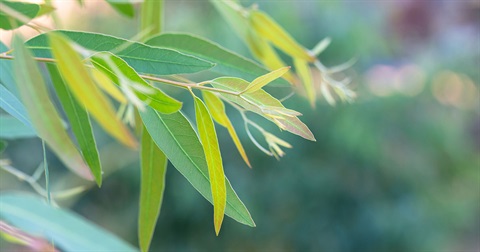Native plants

The Tweed is recognised as a biodiversity hotspot – one of the richest and most diverse regions for flora and fauna in Australia.
Sadly there are 92 plant and 122 animal species recognised as threatened, 11 Endangered Ecological Communities, one Endangered Population and one area of Critical Habitat in the Tweed.
Native Species Planting Guide
The Native Species Planting Guide (NSPG) is an online interactive resource produced to assist home owners, land holders and professionals to prepare locally occurring native species planting lists for projects ranging from landscape-scale restoration to back garden planting.
To complement this online resource a companion booklet has also been produced, My Local Native Garden booklet(PDF, 6MB) : A planting guide to promote biodiversity in the Tweed.
The NSPG contains more than 1550 species and provides a range of information about each species including:
- An image of the plant.
- A range of physical and ecological attributes are assigned to each species including:
- height, growth rate and flower colour
- tolerance to environmental factors including cold, wind, water inundation and salt
- ecological relationships such as feed source, bird and butterfly attraction or susceptibility to Myrtle Rust
- occurrence by soil type and landscape position
- conservation status and potential availability through nurseries.
- Identification of species by stratum (canopy, emergent, understorey, etc.) and their likely prevalence within specific mapped vegetation communities.
The original data was compiled in a spreadsheet format(XLSX, 884KB) in 2015 by Wildsite Ecological Services, Rivendell Botanical Services and Lucinda Cox Graphic Design with input from local botanists, Council staff, local nursery operators, and others for the NSW Environmental Trust funded Tweed Byron Bush Futures Project.
The NSPG will remain a 'work in progress' and feedback from users is encouraged; any perceived errors or omissions or any problems encountered with its use can be conveyed to Council's Project Officer - Biodiversity, Michael Corke, on 02 6670 2400 or mcorke@tweed.nsw.gov.au.
Myrtle Rust
Myrtle Rust is not a notifiable plant disease anymore and falls under different legislation.
Visit the Department of Primary Industries website for further information.
Tweed Shire Council Nursery
Tweed Shire Council's Nursery discontinued the sale of plants to the public as of 1 July 2017.
The role of the Tweed Shire Council nursery is to source and supply all plants used throughout the Tweed's many parks, gardens and reserves as well as street scaping and revegetation projects.
With sustainability as the main focus, nursery staff propagates a variety of native species from locally collected seed contributing to the majority of native species planted each year within the Tweed.
Frequently Asked Questions
Can I plant banana plants in my backyard?
Banana plants, plant material, banana soil and banana production equipment can carry disease which has the potential to adversely affect the States banana industry.
As such the movement of bananas is regulated by the NSW DPI under the Biosecurity Act, with significant fines applicable for the movement of bananas without appropriate permits.
Residents of the Tweed Shire are required to obtain a permit to plant Banana Plants in their backyards. Permits are available from the Department of Primary Industries.
Department of Primary Industries (DPI)
Agriculture Unit
Phone 1800 808 095
Email nsw.agriculture@dpi.nsw.gov.au
Post: NSW DPI, Locked Bag 21, Orange NSW 2800
DPI Alstonville - Tropical Fruit Field Station Agriculture
494 Bruxner Highway
Alstonville NSW 2477
Phone 02 6626 2400
Fax 02 6628 5209